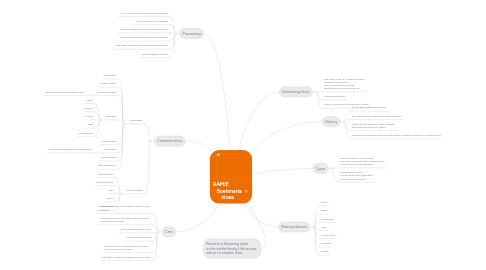RAMIE Boehmeria nivea
by olga onohhova


1. Care
1.1. Machine washing in cold water on gentle cycle, line drying
1.2. Hand washing in cold water with flat drying - mistly recommended
1.3. Avoid folding the garment
1.4. Avoid heavy pressing
1.5. NB! Follow the care directions on fabric - especially blended fabrics
1.6. Ironing on medium or high heat using stem
2. Processing
2.1. 1-2m long rods are obtained from the plant
2.2. The rods are split lengthwise
2.3. The bark is removed from the wooden core
2.4. The bundles of fibers are found in the bark
2.5. Raw fibres are dried and chemically macerated
2.6. Spinnable fiber is ready
3. Characteristics
3.1. Advantages
3.1.1. Dyes easily
3.1.2. Doesn't shrink
3.1.3. Can be bleached
3.1.3.1. However has naturally white colour
3.1.4. Resistant
3.1.4.1. alkalis
3.1.4.2. bacteria
3.1.4.3. rotting
3.1.4.4. light
3.1.4.5. insect attack
3.1.5. Keeps shape
3.1.6. Absorbent
3.1.6.1. Comfortable to wear in warm weather
3.1.7. Stain resisting
3.1.8. Silky appearance
3.2. Disadvantages
3.2.1. Low elasticity
3.2.2. Wrinkles easily
3.2.3. Stiff
3.2.4. Brittle
3.2.5. Expensive
